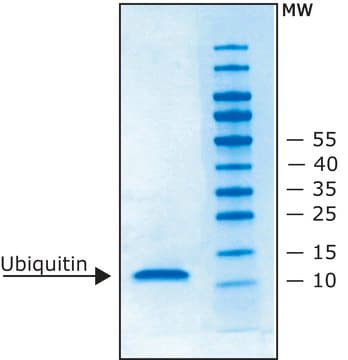MAB8257
Anti-Influenza A Antibody, nucleoprotein, clone A1
clone A1, Chemicon®, from mouse
Sign Into View Organizational & Contract Pricing
All Photos(1)
About This Item
UNSPSC Code:
12352203
eCl@ss:
32160702
NACRES:
NA.41
Recommended Products
biological source
mouse
Quality Level
antibody form
purified immunoglobulin
antibody product type
primary antibodies
clone
A1, monoclonal
species reactivity
human
manufacturer/tradename
Chemicon®
technique(s)
immunofluorescence: suitable
isotype
IgG2a
shipped in
wet ice
Specificity
Specific for the Influenza A nucleoprotein. Has stronger binding with N1-type Flu A. No cross reactivity seen to influenza B or other respiratory viruses. Shown to react with Avian H5N1 strain. No reactivity seen to influenza B or other respiratory viruses.
Immunogen
Epitope: nucleoprotein
Influenza A
Application
Anti-Influenza A Antibody, nucleoprotein, clone A1 detects level of Influenza A & has been published & validated for use in IF.
Indirect Immunofluorescence of acetone fixed specimens.
Optimal working dilutions must be determined by the end user.
Optimal working dilutions must be determined by the end user.
Research Category
Infectious Diseases
Infectious Diseases
Research Sub Category
Infectious Diseases - Viral
Infectious Diseases - Viral
Physical form
Format: Purified
Protein A Purified mouse immunoglobulin in 20 mM sodium phosphate, 250 mM NaCl, pH. 7.6, with 0.1% sodium azide as a preservative.
Protein A purified
Storage and Stability
Maintain for 1 year at 2–8°C from date of shipment. For maximum recovery of product, centrifuge the original vial after thawing and prior to removing the cap.
Analysis Note
Control
Influenza Control Slides, Catalogue Number 5010-5
Influenza Control Slides, Catalogue Number 5010-5
Other Notes
Concentration: Please refer to the Certificate of Analysis for the lot-specific concentration.
Legal Information
CHEMICON is a registered trademark of Merck KGaA, Darmstadt, Germany
Disclaimer
Unless otherwise stated in our catalog or other company documentation accompanying the product(s), our products are intended for research use only and are not to be used for any other purpose, which includes but is not limited to, unauthorized commercial uses, in vitro diagnostic uses, ex vivo or in vivo therapeutic uses or any type of consumption or application to humans or animals.
Not finding the right product?
Try our Product Selector Tool.
recommended
Product No.
Description
Pricing
Storage Class Code
10 - Combustible liquids
WGK
WGK 2
Certificates of Analysis (COA)
Search for Certificates of Analysis (COA) by entering the products Lot/Batch Number. Lot and Batch Numbers can be found on a product’s label following the words ‘Lot’ or ‘Batch’.
Already Own This Product?
Find documentation for the products that you have recently purchased in the Document Library.
Customers Also Viewed
Evaluation of an epitope-blocking enzyme-linked immunosorbent assay for the detection of antibodies to influenza A virus in domestic and wild avian and mammalian species.
Heather J Sullivan,Bradley J Blitvich,Kaci VanDalen,Kevin T Bentler,Alan B Franklin,J Jeffrey Root
Journal of Virological Methods null
Henry Memczak et al.
PloS one, 11(7), e0159074-e0159074 (2016-07-16)
Antibodies against spike proteins of influenza are used as a tool for characterization of viruses and therapeutic approaches. However, development, production and quality control of antibodies is expensive and time consuming. To circumvent these difficulties, three peptides were derived from
Aftab Alam et al.
Neoplasia (New York, N.Y.), 21(10), 945-962 (2019-08-20)
Down-regulation or loss of MHC class I expression is a major mechanism used by cancer cells to evade immunosurveillance and increase their oncogenic potential. MHC I mediated antigen presentation is a complex regulatory process, controlled by antigen processing machinery (APM)
Boaz Musafia et al.
PloS one, 9(5), e97696-e97696 (2014-05-23)
This study describes the development of aptamers as a therapy against influenza virus infection. Aptamers are oligonucleotides (like ssDNA or RNA) that are capable of binding to a variety of molecular targets with high affinity and specificity. We have studied
Thomas Labadie et al.
Frontiers in microbiology, 9, 1496-1496 (2018-07-25)
The transmission routes of Influenza A viruses (IAVs) submit virus particles to a wide range of environmental conditions that affect their transmission. In water, temperature, salinity, and pH are important factors modulating viral persistence in a strain-dependent manner, and the
Our team of scientists has experience in all areas of research including Life Science, Material Science, Chemical Synthesis, Chromatography, Analytical and many others.
Contact Technical Service






